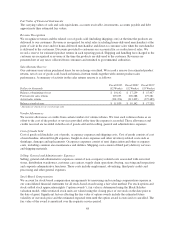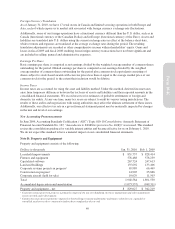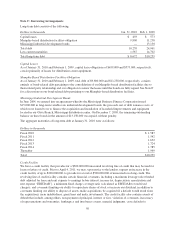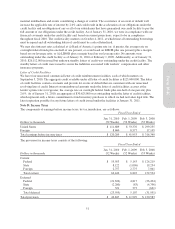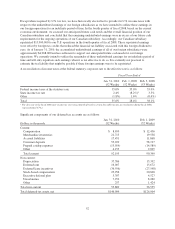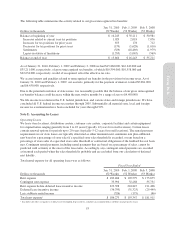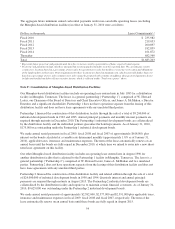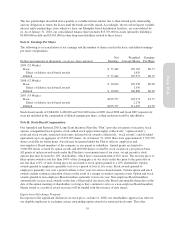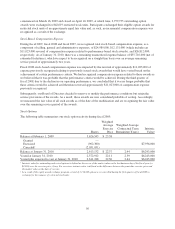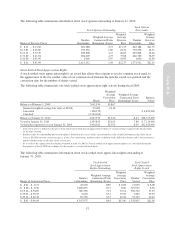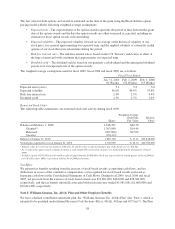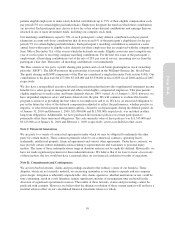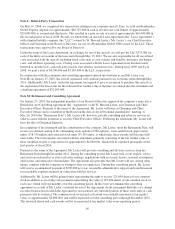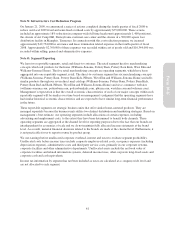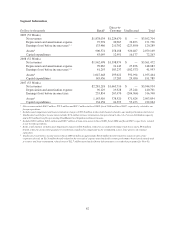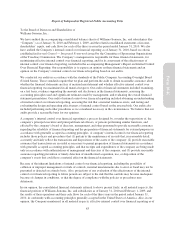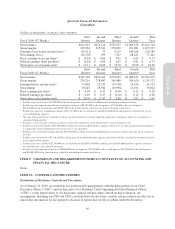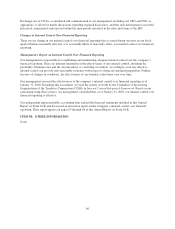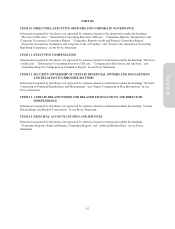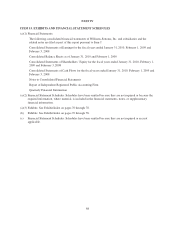Pottery Barn 2009 Annual Report Download - page 70
Download and view the complete annual report
Please find page 70 of the 2009 Pottery Barn annual report below. You can navigate through the pages in the report by either clicking on the pages listed below, or by using the keyword search tool below to find specific information within the annual report.
The fair value for both options and awards is estimated on the date of the grant using the Black-Scholes option
pricing model with the following weighted-average assumptions:
•Expected term – The expected term of the option awards represents the period of time between the grant
date of the option awards and the date the option awards are either exercised or canceled, including an
estimate for those option awards still outstanding.
•Expected volatility – The expected volatility is based on an average of the historical volatility of our
stock price, for a period approximating our expected term, and the implied volatility of externally traded
options of our stock that were entered into during the period.
•Risk-free interest rate – The risk-free interest rate is based on the U.S. Treasury yield curve in effect at
the time of grant and with a maturity that approximates our expected term.
•Dividend yield – The dividend yield is based on our quarterly cash dividend and the anticipated dividend
payout over our expected term of the option awards.
The weighted average assumptions used for fiscal 2009, fiscal 2008 and fiscal 2007 are as follows:
Fiscal Year Ended
Jan. 31, 2010
(52 Weeks)
Feb. 1, 2009
(52 Weeks)
Feb. 3, 2008
(53 Weeks)
Expected term (years) 5.1 5.2 5.0
Expected volatility 56.0% 49.4% 33.6%
Risk-free interest rate 2.4% 2.5% 4.4%
Dividend yield 2.3% 2.7% 1.0%
Restricted Stock Units
The following table summarizes our restricted stock unit activity during fiscal 2009:
Shares
Weighted Average
Grant Date
Fair Value
Intrinsic
Value1
Balance at February 1, 2009 1,246,333 $20.50
Granted2,31,303,040 $14.44
Released (307,890) $17.09
Canceled (354,323)
Balance at January 31, 2010 1,887,160 $ 17.11 $35,818,000
Vested plus expected to vest at January 31, 2010 1,722,990 $ 16.72 $32,702,000
1Intrinsic value for restricted stock units is defined as the market value on the last business day of the fiscal year (or $18.98).
2As a result of the equity award exchange program, a total of 842,019 restricted stock units were granted during the first quarter of fiscal
2009.
3Includes a grant of 249,501 (at a fair market value of approximately $5,000,000, which was expensed in the fourth quarter of fiscal 2009) to
our Chief Executive Officer associated with his fiscal 2009 performance.
Tax Effect
We present tax benefits resulting from the exercise of stock-based awards as operating cash flows, and tax
deductions in excess of the cumulative compensation cost recognized for stock-based awards exercised as
financing cash flows in the Consolidated Statements of Cash Flows. During fiscal 2009, fiscal 2008 and fiscal
2007, net proceeds from the exercise of stock-based awards was $11,861,000, $461,000 and $28,362,000,
respectively, and the tax benefit (shortfall) associated with such exercises totaled $5,981,000, ($1,660,000) and
$10,821,000, respectively.
Note I: Williams-Sonoma, Inc. 401(k) Plan and Other Employee Benefits
We have a defined contribution retirement plan, the “Williams-Sonoma, Inc. 401(k) Plan” (the “Plan”), which is
intended to be qualified under Internal Revenue Code Sections 401(a), 401(k), 401(m) and 4975(e)(7). The Plan
58


